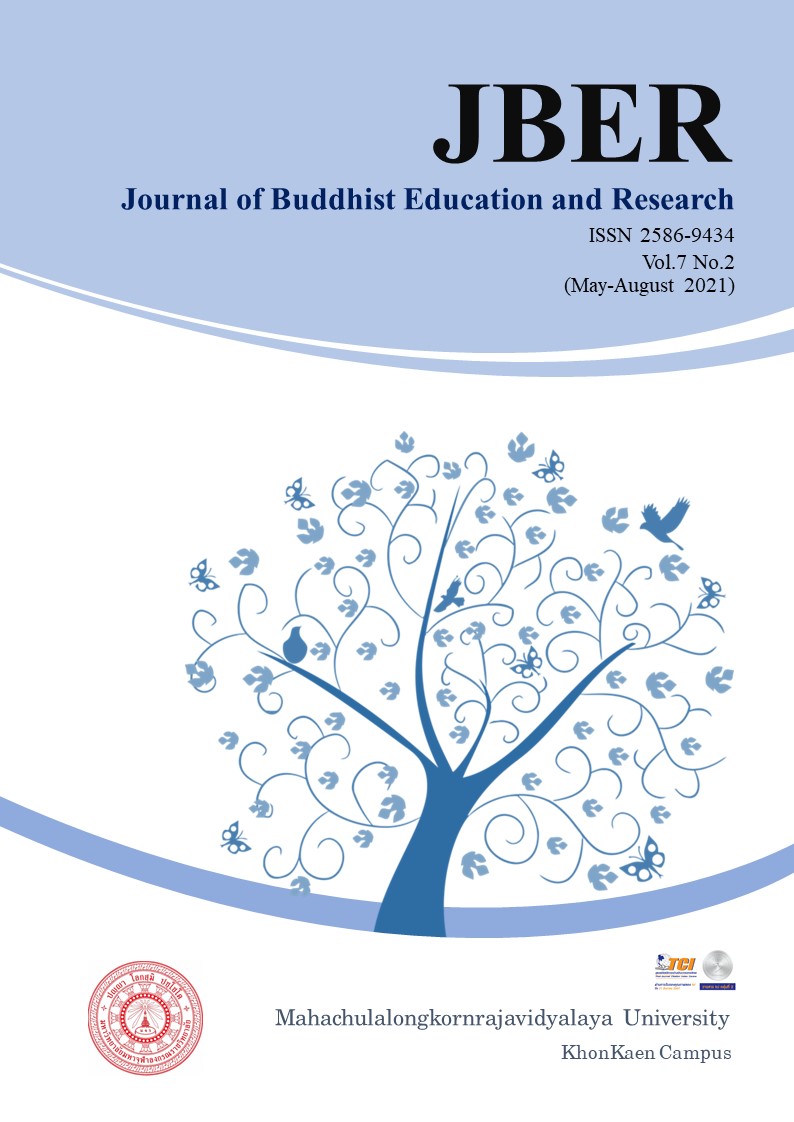แนวการบูรณาการ STEM Education เพื่อพัฒนาสมรรถนะผู้เรียนในศตวรรษที่ 21
คำสำคัญ:
กระบวนการ STEM , การพัฒนาสมรรถนะศตวรรษที่ 21บทคัดย่อ
การจัดการเรียนรู้โดยการบูรณาการ กระบวนการของ STEM Education กับเนื้อหาวิชาโดยผู้สอนวางแผนนำบริบทที่ใกล้ตัวนักเรียนมาท้าทายผู้เรียน ในการหาแนวทางแก้ปัญหาโดยการใช้ศาสตร์ความรู้ จินตนาการ ความคิดสร้างสรรค์ เป็นแนวทางที่ที่ผู้เรียนได้ลงมือจริงในการแก้ปัญหา หรือหาแนวทางในการแก้ไข ซึ่งผู้เขียนขอนำเสนอแนวทางการออกแบบกระบวนการจัดการเรียนรู้เพื่อการบูรณาการความรู้ The Engineering Design Process (EDP) โดยใช้กระบวนการออกแบบทางวิศวกรรม 6 ขั้น วิศวกรรม (Engineering) มีขั้นตอนการบูรณาการกับกิจกรรมในชั้นดังนี้ (1) ระบุสถานการณ์ปัญหา (Identify the problem) (2) การวิเคราะห์ 5 ต้นทุน (Analyzing five capitals) (3) การค้นหาแนวคิดและองค์ความรู้ (Explore information) (4) การวางแผนและพัฒนาโดยการแลกเปลี่ยนแนวคิด (Planning and development Knowledge to sharing (5) การสร้างโมเดล วิธีแก้ปัญหา และ ทดสอบ ประเมินผล (Model solution testing and evaluating the solution) (6) การนำเสนอผลลัพธ์การสะท้อนคิดและปรับปรุง (Reflection and revise present the solution) โดยในกระบวนการออกแบบจะการประยุกต์ใช้ความรู้วิทยาศาสตร์และคณิตศาสตร์ และศาสตร์อื่นที่เกี่ยวข้อง ในการแก้ปัญหาซึ่งจะเป็นแนวทางการบูรณาการความรู้ ให้นักเรียนนำไปใช้ได้จริงต่อไปในอนาคต
เอกสารอ้างอิง
ชวนิดา สุวานิช. (2017). STEM Education กับการจัดการเรียนรู้เพื่อพัฒนานักศึกษา วิชาชีพครูให้มีคุณลักษณะ ของผู้เรียนในศตวรรษที่ 21 ภายใต้นโยบายประเทศไทย 4.0. วารสารศึกษาศาสตร์ มหาวิทยาลัยศิลปากร.15(1), 18-27.
อภิสิทธิ์ ธงไชย. (2016). ความสำคัญของวิศวกรรมในการจัดการเรียนรู้วิทยาศาสตร์ในศตวรรษ ที่ 21. วารสาร ศึกษาศาสตร์ปริทัศน์. 31(3), 48-53.
Asghar, A. , Ellington, R. , Rice, E. , Johnson, F. , & Prime, G. M. (2012). Supporting STEM Education in Secondary Science Contexts. Interdisciplinary Journal of Problem-Based Learning, 6(2).
Bootchan B., Tupsai J., Yuenyong C. (2016). Developing the STS Unit of Heat Transfer to Provide Students’ Perception of the Relationship between Science Technology Engineering and Mathematics. Khon Kaen University, Thailand Proceeding of the 3rd International Conference on Language, Humanities and Innovation 2016.
Bybee, R. W. (2010). What is STEM education?. Science, 329(5995), 996-996.
Bybee, R. W., & Fuchs, B. (2006). Preparing the 21st century workforce: A new reform in science and technology education. Journal of Research in Science Teaching. 43(4), 349-352.
Koehler, C., Binns, I. C., & Bloom, M. A. (2015). The emergence of STEM.STEM road map: A framework for integrated STEM education, 13-22.
Corlu, M. S., Capraro, R. M., & Capraro, M. M. (2014). Introducing STEM education: implications for educating our teachers for the age of innovation. Egitim ve Bilim, 39(171).
Carr, R. L., Bennett, L. D., & Strobel, J. (2012). Engineering in the K‐12 STEM Standards of the 50 US States: An Analysis of Presence and Extent. Journal of Engineering Education. 101(3), 539-564.
Ejiwale, J. A. (2012). Facilitating teaching and learning across STEM fields. Journal of STEM Education: Innovations and Research, 13(3), 87
Hellinger, P. & Lee, M. (2011). A decade of education reform in Thailand: broken promise or impossible dream. Cambridge Journal of Education Aquatic Insects. 41(2), 139–158
Institute for the Promotion of Teaching Science and Technology. (2008). National science curriculum standards: The basic education curriculum B.E.2544. Retrieved 2013, from kroo.ipst.ac.th/ipst/eng/curriculum/Science Curriculum.
Trilling, B., & Fadel, C. (2009). 21st century skills: Learning for life in our times. John Wiley & Sons.
Tupsai, J., Bunprom, S., Saysang, J., & Yuenyong, C. (2019). Students’ Applying STEM Knowledge in Learning on the STS-STEM Education Wave Learning Unit. Journal of Physics: Conference Series. 1340(1), 012054. IOP Publishing.
Tupsai, J., & Yuenyong, C. (2018, January). Investigating students’ view on STEM in learning about electrical current through STS approach. AIP Conference Proceedings. 1923(1), 030054). AIP Publishing LLC.
Seattha, P., Tupsai, J., Sranamkham, T., & Yuenyong, C. (2016). Students’ view on STEM in learning about circular motion through STS approach. AIP Conference Proceedings. 1775(1), (030063). AIP Publishing LLC.
Srikoom, W., Hanuscin, D. L., & Faikhamta, C. (2017). Perceptions of in-service teachers toward teaching STEM in Thailand. Asia - Pacific Forum on Science Learning and Teaching, 18(2), 1-23. Retrieved from https://search.proquest.com/scholarly-journals/perceptions-service-teachers-toward-teaching-stem/docview/2055193566/se-2?accounted=27797
Wongwanich, S., &Wiratchai, N. (2004). Evaluation of the Learning Reform In Accordance With the National Education Act 1999: Multiple Case Studies. Paper for an academic meeting on research on learning reform, organised by the Office of the Education Council, Ministry of Education, July 19-20, 2004, 243-252.





